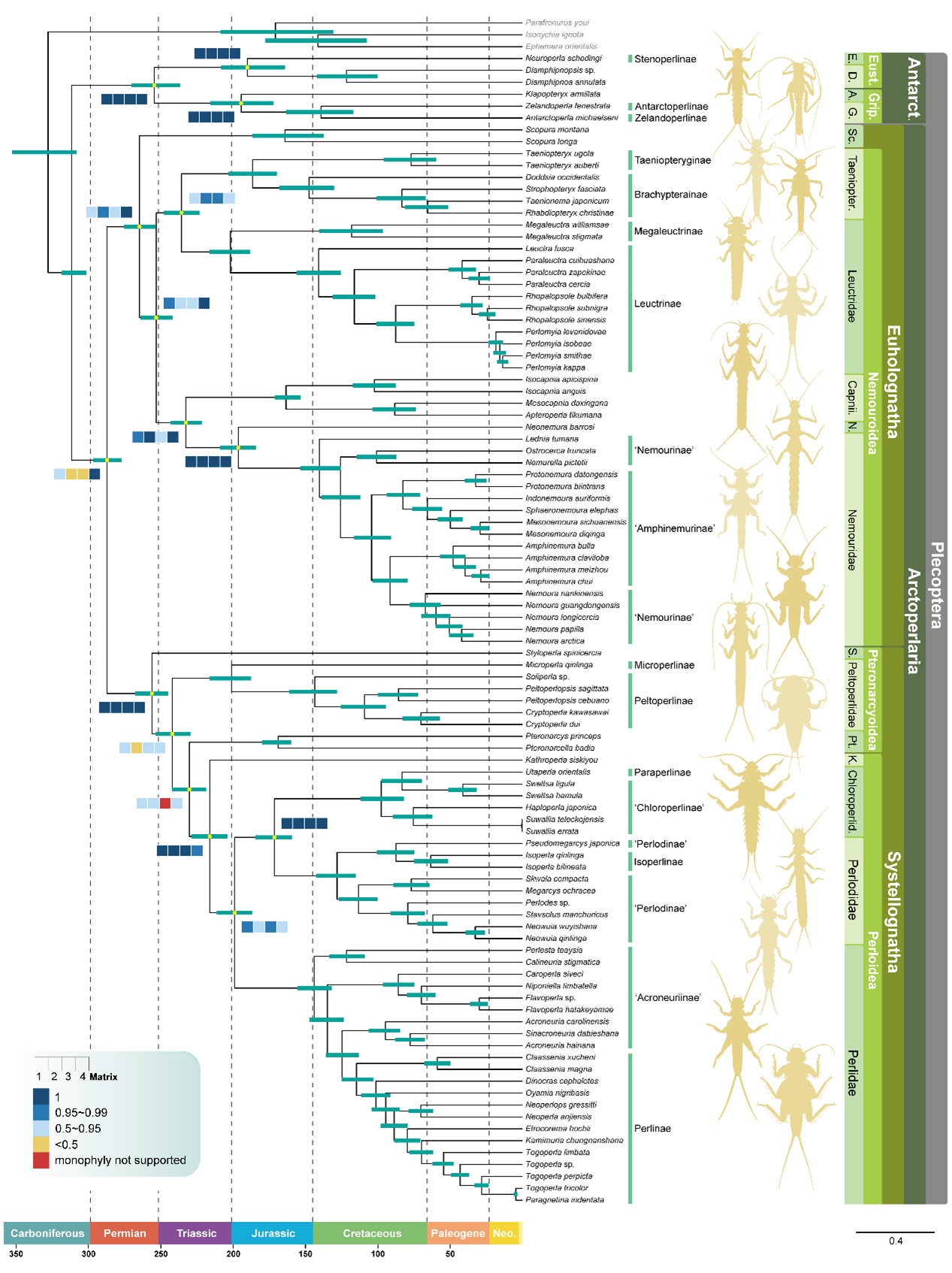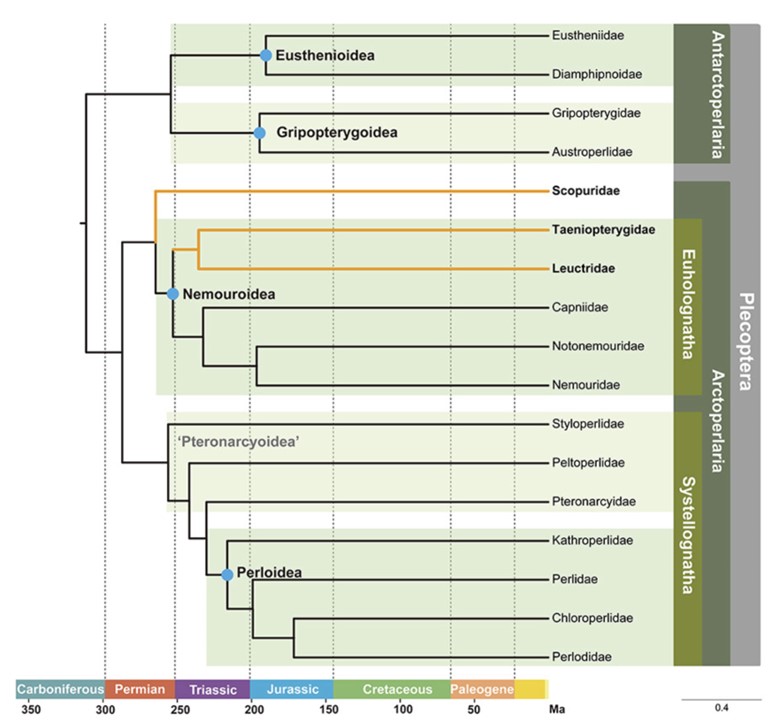Stoneflies (order Plecoptera) are among the most ancient lineages of winged insects. Not only are they key bioindicators for assessing the health of freshwater ecosystems, but they also hold great ecological value and evolutionary significance. However, constructing a robust phylogeny for stoneflies has long been challenging due to an incomplete fossil record, complex morphological evolution, and limited genomic sampling.
Recently, a research team led by Prof. CAI Chenyang from the Nanjing Institute of Geology and Palaeontology, Chinese Academy of Sciences (NIGPAS), and Professor DU Yuzhou from Yangzhou University conducted an in-depth collaborative study. The results were recently published online in the interdisciplinary journal iScience.
Using mitochondrial genome data from 97 stonefly species representing all 17 extant families, and employing an integrative analytical framework that combined multiple evolutionary models, the team successfully reconstructed the backbone phylogeny of stoneflies. Their study clarified evolutionary relationships among major lineages, resolved key divergence events, and established a refined temporal framework for stonefly evolution. These findings provide critical molecular and chronological evidence for understanding the origin, adaptation, and radiation of this ancient insect order.
Although around 4,000 extant species of stoneflies are known and their morphology has been extensively studied, their placement within the insect tree of life—and the relationships among the families—have long been debated. In particular, the basal relationships between the two major suborders, Euholognatha and Systellognatha, have remained unresolved due to limitations in gene sampling and evolutionary modeling in earlier studies.
In this study, the researchers newly sequenced the mitochondrial genomes of 29 extant species, combining them with 68 publicly available datasets, thus achieving complete mitochondrial representation of all 17 stonefly families for the first time. Using both maximum likelihood and Bayesian inference approaches—particularly applying state-of-the-art models such as CAT-GTR that effectively account for site heterogeneity—they conducted a comprehensive phylogenetic reconstruction of the global stonefly fauna.
The analyses clearly resolved the early diversification of Euholognatha and strongly supported Scopuridae as the earliest-diverging lineage within this group. This finding is consistent with morphological evidence and suggests that the loss of courtship behavior in this family is likely a secondary reduction. The study also provided new insights into controversial taxa, recovering Taeniopterygidae as the sister group to Leuctridae, and clarified relationships within Systellognatha, supporting Styloperlidae as its earliest-diverging lineage.
By integrating the latest paleontological and stratigraphic data, the study also reconstructed the temporal framework of stonefly evolution. The results indicate that crown-group stoneflies originated during the Pennsylvanian, with major diversification events among extant families occurring between the Cisuralian and Early Triassic.
The family-level phylogeny established in this research provides a solid foundation for future studies on stonefly morphological evolution, biogeography, and behavioral ecology. Moreover, the study highlights the potential of mitochondrial genomic data, when analyzed under optimal evolutionary models, to resolve higher-level phylogenetic relationships in insects. Future work integrating expanded taxon sampling, nuclear genomic data, and fossil evidence will enable a more complete reconstruction of the evolutionary history of this ancient insect lineage.
This research was supported by the National Natural Science Foundation of China and the National Key R&D Program of China.
Reference: Wang, Y., Yang, X., Engel, M. S., Huo, Q.-B., Du, Y.-Z., & Cai, C. (2025). Reconstructing the evolutionary history of stoneflies: Phylogenetic insights and temporal dynamics. iScience, 113614. https://doi.org/10.1016/j.isci.2025.113614.

Evolutionary timetree of Plecoptera (stoneflies) with comprehensive coverage of all extant families

Evolutionary relationships and divergence time estimates of various families within Plecoptera


